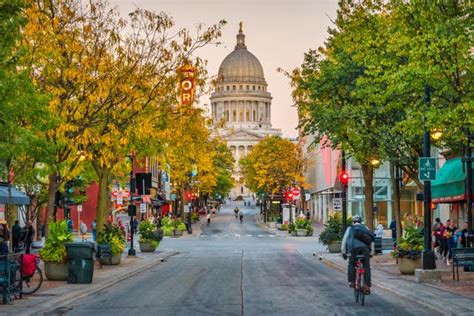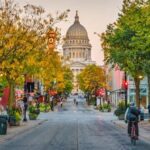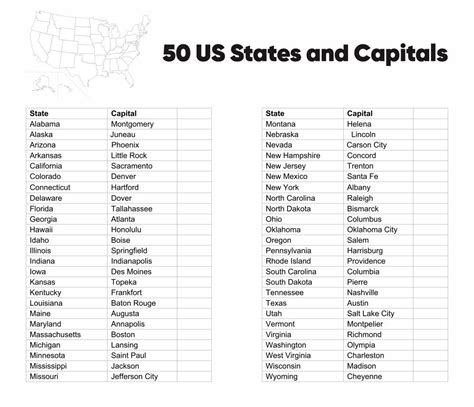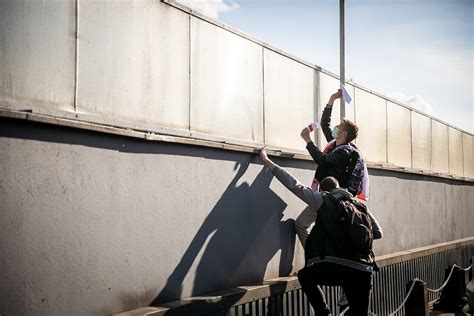
After visiting all 50 U.S. state capitals in just 30 days, a travel blogger has identified two cities as particularly disappointing: Trenton, New Jersey, and Springfield, Illinois. The whirlwind tour, documented on social media, aimed to showcase the diverse character of each capital, but these two cities stood out for their perceived lack of vibrancy and attractions.
A traveler, known for their ambitious journey across all 50 U.S. state capitals in a single month, has publicly revealed their least favorite destinations: Trenton, New Jersey, and Springfield, Illinois. The traveler, chronicling their experiences on platforms like TikTok, embarked on this rapid-fire tour to capture the unique essence of each capital city. However, Trenton and Springfield failed to impress, leaving the traveler and many viewers underwhelmed.
The traveler highlighted Trenton’s challenges in attracting visitors, noting that “most people don’t visit Trenton unless they have to.” This observation speaks to the city’s struggle with tourism and its reputation as primarily a government and business hub rather than a leisure destination. The state capital of New Jersey faces competition from nearby metropolitan areas like New York City and Philadelphia, which often overshadow it in terms of cultural attractions and entertainment options. Trenton’s issues are further compounded by economic struggles, contributing to a less inviting atmosphere for tourists. The traveler pointed out the downtown area lacks appeal, as reported by locals, with limited options for dining and entertainment.
Springfield, Illinois, the other city cited as disappointing, suffers from a different set of challenges. Although known as the home of Abraham Lincoln, which should be a major draw, the traveler found the city’s historical sites insufficient to create a compelling experience. While places like the Abraham Lincoln Presidential Library and Museum exist, the overall atmosphere and additional attractions seemingly fell short of expectations. The traveler noted the city’s economic struggles, which have impacted its upkeep and overall appeal. They cited limited activities and a general lack of vibrancy as primary reasons for their disappointment. The journey sought to highlight the distinct characteristics of each capital, but Springfield, according to the traveler, didn’t live up to its potential despite its historical significance.
The traveler’s journey started with high hopes of uncovering hidden gems and showcasing the diversity of America’s state capitals. Planning such an ambitious trip required meticulous organization and coordination. They charted a course covering thousands of miles, utilizing various modes of transportation, from airplanes to rental cars. Each stop was intended to be a deep dive into the local culture, history, and unique offerings. The social media posts included snapshots of iconic landmarks, local eateries, and interactions with residents, creating a real-time travelogue for their followers.
However, the rapid pace of the trip, averaging less than a day in each capital, presented challenges in fully experiencing each location. This intense schedule meant the traveler had to prioritize key attractions and rely on quick impressions. Despite the time constraints, the goal was to provide an honest and engaging portrayal of each city. The traveler’s followers actively participated in the journey through comments, suggestions, and questions, making it an interactive experience.
Trenton, situated in the central part of New Jersey, has a rich history dating back to the colonial era. It served as a pivotal location during the American Revolutionary War, most notably as the site of George Washington’s daring surprise attack on Hessian troops in 1776. The Battle of Trenton is a significant event in American history, and the city boasts several historical sites commemorating this period. Despite this historical significance, Trenton faces modern-day challenges that have impacted its appeal.
The city has struggled with economic decline, leading to a decrease in population and a rise in poverty rates. This economic downturn has affected the upkeep of public spaces and infrastructure, contributing to a less attractive environment for visitors. The city’s crime rate is also higher than the national average, which can deter tourists. Efforts have been made to revitalize Trenton, including investments in arts and culture, but progress has been slow. The city is actively working to address its economic and social issues, but the impact on its tourism industry remains a significant hurdle. Trenton’s proximity to major metropolitan areas also presents a challenge, as it struggles to compete with the attractions and amenities offered by New York City and Philadelphia.
Springfield, Illinois, holds a special place in American history as the adopted hometown of Abraham Lincoln. Lincoln lived in Springfield for over 20 years before becoming president, and the city is home to numerous historical sites related to his life and legacy. These include the Abraham Lincoln Home National Historic Site, the Lincoln Tomb, and the Old State Capitol, where Lincoln delivered his famous “House Divided” speech. The Abraham Lincoln Presidential Library and Museum is another major attraction, offering immersive exhibits that detail Lincoln’s life and presidency.
However, despite its rich historical connections, Springfield faces its own set of challenges. The city’s economy has struggled in recent years, with a decline in manufacturing jobs and a shrinking population. This economic downturn has impacted the city’s ability to maintain its infrastructure and invest in new attractions. While historical tourism remains a significant draw, the city has struggled to diversify its economy and attract a wider range of visitors. Springfield also faces competition from other Midwestern cities with more diverse entertainment and cultural options. The city is actively working to revitalize its downtown area and promote its historical assets, but it needs to overcome economic hurdles to fully realize its potential as a tourist destination.
The traveler’s comments about Trenton and Springfield have sparked debate on social media. Some viewers agreed with the assessment, sharing their own negative experiences in these cities. Others defended the cities, highlighting their hidden gems and unique qualities. Many pointed out that judging a city based on a short visit may not provide a complete or fair picture. The traveler’s perspective, while subjective, has raised important questions about the challenges faced by smaller state capitals in attracting visitors and maintaining their appeal. The feedback highlighted the importance of local perspectives in understanding the complexities of each city.
The rapid pace of the traveler’s tour also raised concerns about the depth of their experiences. Spending less than a day in each capital meant they could only scratch the surface of what each city has to offer. This limitation was acknowledged by the traveler, who emphasized that their observations were based on initial impressions and limited exploration. Despite these constraints, the journey provided a valuable snapshot of the diverse realities of America’s state capitals. The traveler’s aim was to inspire others to explore these cities and form their own opinions, recognizing that each visitor’s experience would be unique.
Ultimately, the traveler’s journey across the 50 state capitals serves as a reminder of the diverse landscape of America. While some cities may not live up to expectations, each one has its own unique story to tell. The value of travel lies in the exploration of these stories, the discovery of hidden gems, and the understanding of different perspectives. Even in cities that are perceived as disappointing, there is always something to be learned and appreciated. The traveler’s adventure encourages others to embark on their own journeys, to experience the richness of America’s state capitals, and to form their own opinions about the places they visit.
The impact of social media on travel is undeniable. Platforms like TikTok and Instagram have transformed the way people plan and experience their trips. Travelers now rely on social media for inspiration, recommendations, and real-time updates. The traveler’s journey across the 50 state capitals is a prime example of how social media can be used to document and share travel experiences. The traveler’s posts generated significant engagement, sparking conversations about the merits and drawbacks of each city visited. This interactive approach to travel allows followers to participate in the journey, offering their own insights and suggestions.
Social media also plays a crucial role in shaping perceptions of destinations. Positive reviews and stunning visuals can attract tourists, while negative feedback can deter potential visitors. The traveler’s comments about Trenton and Springfield, whether fair or not, have the potential to impact the cities’ tourism industries. This influence highlights the responsibility of travel bloggers and influencers to provide balanced and accurate information. While personal opinions are valuable, it is important to acknowledge the complexities of each destination and avoid generalizations. The traveler’s journey underscores the power of social media to shape travel trends and influence perceptions of places around the world.
The traveler’s cross-country journey wasn’t just about identifying disappointments; it was also about highlighting positive aspects of other state capitals. While Trenton and Springfield may have fallen short, several other cities impressed the traveler with their unique charm, attractions, and welcoming atmosphere. These positive experiences underscore the diversity and richness of America’s state capitals. The traveler’s journey, while highlighting some disappointments, also served to celebrate the many vibrant and appealing destinations across the country.
The cities that stood out positively offer valuable lessons for those struggling to attract tourists and maintain their appeal. By showcasing the positive qualities of these successful capitals, the traveler’s journey can inspire other cities to improve their offerings and create more compelling experiences for visitors. This exchange of ideas and best practices is crucial for the continued growth and development of the tourism industry. The traveler’s insights, both positive and negative, contribute to a broader understanding of what makes a city appealing and successful in the eyes of tourists.
In conclusion, the traveler’s ambitious journey across all 50 U.S. state capitals in 30 days has provided a unique perspective on the diverse landscape of America. While Trenton, New Jersey, and Springfield, Illinois, were identified as the least favorite destinations, the overall experience served as a reminder of the richness and complexity of America’s state capitals. The traveler’s journey, documented on social media, has sparked debate and conversation, highlighting the importance of honest and engaging travel reporting. Ultimately, the value of travel lies in the exploration of different cultures, the discovery of hidden gems, and the formation of personal opinions about the places we visit. The traveler’s adventure encourages others to embark on their own journeys, to experience the diversity of America, and to share their own stories with the world. The lessons learned from this journey can inform efforts to improve tourism and enhance the appeal of cities across the country. The debate surrounding the traveler’s opinions also highlights the subjective nature of travel experiences and the importance of considering multiple perspectives.
Frequently Asked Questions (FAQs)
1. Why did the traveler choose to visit all 50 state capitals in just 30 days?
The traveler aimed to showcase the diversity and unique character of each U.S. state capital within a condensed timeframe. This ambitious goal was intended to create an engaging social media travelogue, offering viewers a rapid-fire glimpse into the heart of each state. According to the source article, this approach aimed to capture the essence of each capital and share it with a wide audience. The traveler’s objective was to highlight the distinct features of each city, documenting their observations and experiences through various social media platforms.
2. What specific factors led the traveler to rate Trenton, New Jersey, and Springfield, Illinois, as the “worst” state capitals?
The traveler cited a perceived lack of vibrancy and attractions as the primary reasons for their disappointment with Trenton and Springfield. In Trenton, the traveler noted the city’s struggle to attract visitors, pointing out that “most people don’t visit Trenton unless they have to.” This perception was attributed to the city’s economic challenges, competition from nearby metropolitan areas, and a lack of compelling leisure options. In Springfield, despite its historical significance as the home of Abraham Lincoln, the traveler found the city’s historical sites insufficient to create a compelling experience. They also noted the city’s economic struggles and a general lack of vibrancy as contributing factors to their negative assessment.
3. How did the traveler document their journey and share their experiences with the public?
The traveler primarily used social media platforms, such as TikTok and Instagram, to document their journey and share their experiences. They posted snapshots of iconic landmarks, local eateries, and interactions with residents, creating a real-time travelogue for their followers. These posts generated significant engagement, with viewers offering comments, suggestions, and questions. The interactive approach allowed the traveler to connect with their audience and provide an engaging and informative portrayal of each city visited. The traveler aimed to provide an honest account of each capital, balancing positive and negative observations.
4. What kind of reactions did the traveler’s opinions about Trenton and Springfield generate on social media?
The traveler’s comments about Trenton and Springfield sparked debate on social media. Some viewers agreed with the assessment, sharing their own negative experiences in these cities. Others defended the cities, highlighting their hidden gems and unique qualities. Many pointed out that judging a city based on a short visit may not provide a complete or fair picture. The traveler’s perspective, while subjective, raised important questions about the challenges faced by smaller state capitals in attracting visitors and maintaining their appeal.
5. What are some of the broader implications of this traveler’s journey and opinions about different state capitals?
The traveler’s journey highlights the diverse landscape of America and the challenges faced by some cities in attracting tourists and maintaining their appeal. It underscores the importance of honest and engaging travel reporting, as well as the impact of social media on shaping perceptions of destinations. The traveler’s opinions, while subjective, can serve as a catalyst for discussion and inspire efforts to improve tourism and enhance the appeal of cities across the country. The journey also serves as a reminder of the subjective nature of travel experiences and the importance of considering multiple perspectives when evaluating a destination.









